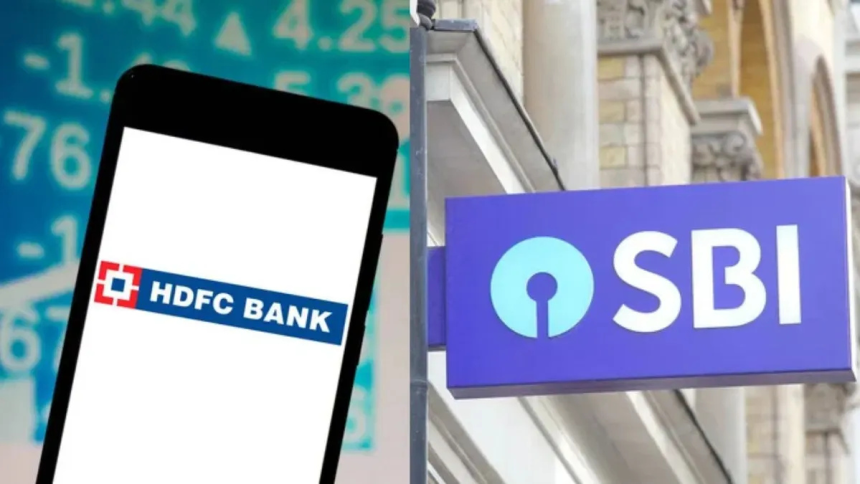When it comes to mutual fund investments in India, two names consistently dominate discussions—State Bank of India Mutual Fund and HDFC Mutual Fund. Both have built a strong reputation over decades, offering diverse schemes that cater to different investor needs. But how do these two compare against each other? For anyone planning to grow wealth through mutual funds, understanding the strengths, strategies, and track records of these giants is essential.
In this blog, we’ll take a closer look at State Bank of India Mutual Fund and HDFC Mutual Fund, comparing their history, performance, fund categories, and investor-friendly features to help you make a well-informed decision.
A Brief History of the Two Giants
State Bank of India Mutual Fund (SBI MF)
Launched in 1987, SBI MF is sponsored by the country’s largest bank, the State Bank of India. Backed by the trust and reach of SBI, the fund house has become one of the leading players in India’s asset management industry. Today, it manages assets worth several lakh crore, serving millions of investors across urban and rural India. SBI MF’s strength lies in its wide distribution network and the ability to cater to first-time investors while also offering sophisticated products for experienced ones.
HDFC Mutual Fund
HDFC MF began operations in 2000 and is promoted by HDFC, one of India’s most trusted financial institutions. Over the years, it has carved out a strong market presence and is often viewed as a reliable choice for both retail and institutional investors. Known for disciplined fund management and consistency, HDFC MF has remained a top performer in several categories.
Fund Categories and Offerings
Both fund houses offer a wide range of schemes including equity, debt, hybrid, and solution-oriented funds. However, each has its own flagship products and areas of strength.
- SBI Mutual Fund Highlights:
- SBI Small Cap Fund and SBI Bluechip Fund are popular among equity investors.
- SBI Magnum Gilt Fund attracts conservative investors seeking stable returns from government securities.
- SBI MF has also gained recognition for its ESG (Environmental, Social, and Governance) fund, making it one of the pioneers in sustainable investing in India.
- HDFC Mutual Fund Highlights:
- HDFC Flexi Cap Fund and HDFC Top 100 Fund are strong equity options with long track records.
- For debt investors, the HDFC Corporate Bond Fund and HDFC Short Term Debt Fund are widely respected.
- HDFC MF has a reputation for value-oriented strategies, appealing to investors who prefer stability over high volatility.
Performance Track Record
When comparing SBI vs HDFC mutual fund performance, both houses have delivered competitive returns, though performance can vary depending on market conditions and the specific fund category.
SBI Mutual Fund:
SBI MF has shown strong performance in recent years, especially in small- and mid-cap segments. The SBI Small Cap Fund, for example, has been among the top performers in its category over a five-year horizon. The fund house’s growing focus on active management and innovation has helped it attract a younger investor base.
HDFC Mutual Fund:
HDFC MF has a reputation for consistency. While it may not always top short-term performance charts, many of its funds have rewarded long-term investors handsomely. The HDFC Flexi Cap Fund, in particular, has shown resilience across market cycles, making it a go-to option for cautious equity investors.
Risk Management and Investment Philosophy
- State Bank of India Mutual Fund emphasises diversification and innovation. The fund house is proactive in launching thematic and sectoral funds, offering investors exposure to emerging opportunities. Its risk management practices are designed to balance high-growth potential with safeguards against market volatility.
- HDFC Mutual Fund, on the other hand, focuses on value and discipline. It often sticks to time-tested strategies and avoids chasing short-term market trends. This philosophy appeals to investors who want a steady approach with less exposure to aggressive bets.
Investor Accessibility and Digital Reach
Another important factor is how easy it is for investors to access and manage their mutual fund investments.
- SBI Mutual Fund benefits from the vast reach of the State Bank of India. Investors in even the most remote towns can access SBI MF products through bank branches. The AMC has also invested heavily in digital platforms, making online investing, tracking, and redemption seamless.
- HDFC Mutual Fund combines strong digital presence with robust customer service. While its physical reach may not match SBI’s rural penetration, its digital onboarding, user-friendly app, and customer-first approach have won investor loyalty.
Costs and Expense Ratios
Expense ratios can significantly impact returns over time.
- SBI Mutual Fund generally offers competitive expense ratios, particularly in its direct plans. Being a large-scale AMC, it has the advantage of economies of scale, which benefits investors.
- HDFC Mutual Fund also keeps expense ratios reasonable, though some investors feel its flagship equity schemes are slightly costlier compared to SBI MF. That said, many investors are willing to pay a premium for the stability and trust HDFC brings.
Which One Should You Choose?
Choosing between State Bank of India Mutual Fund and HDFC Mutual Fund depends largely on your financial goals, risk appetite, and investment horizon.
- If you’re looking for aggressive growth, want exposure to small- and mid-cap opportunities, or prefer innovative products, SBI MF could be the better option.
- If you prefer stability, proven long-term performance, and a disciplined, value-driven approach, HDFC MF is a strong choice.
It’s also worth noting that you don’t necessarily have to pick one over the other. Many seasoned investors diversify across both fund houses to balance growth and stability.
Final Thoughts
Both State Bank of India Mutual Fund and HDFC Mutual Fund have established themselves as trustworthy partners for Indian investors. SBI MF stands out for its innovation, wide reach, and strong performance in growth-oriented categories, while HDFC MF shines for its consistency, discipline, and investor-friendly approach.
Ultimately, the right choice depends on aligning the fund house’s strengths with your personal investment strategy.
Lynn Martelli is an editor at Readability. She received her MFA in Creative Writing from Antioch University and has worked as an editor for over 10 years. Lynn has edited a wide variety of books, including fiction, non-fiction, memoirs, and more. In her free time, Lynn enjoys reading, writing, and spending time with her family and friends.















